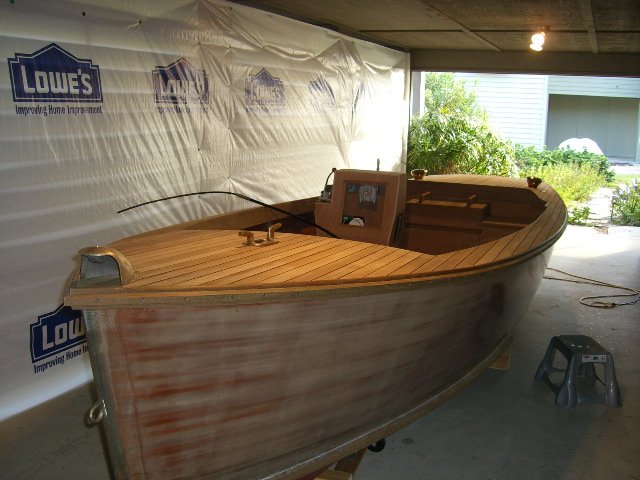Lofting and Lines-taking
Lofting and lines-taking have been important parts of my work both as a boat builder and researcher. I have taken the lines off (measured) historic boats and lofted them for museums and clients for documentation and replication.
Lofting is traditionally the first step in the boat building process. The name comes from the mold loft, the place where the lines of a boat are drawn on the floor full size, principally to make patterns for the molds used to build the hull. Lofting is an invaluable tool, since it allows the boat builder to correct any discrepancies in scaling a drawing to full size, and to derive many details of construction including bevels, rabbets and mold patterns. All that is required to loft a boat is a table of offsets, which is a set of dimensions of the boat taken from fixed baselines. I am able to scale the offsets from a simple lines drawing published in a book, and then correct any inaccuracies when I loft it full-size.
Lines-taking is a process wherein detailed measurements of an existing boat's shape are taken and recorded. These measurements are compiled, creating a table of offsets for the boat. Lines-taking has long been an essential part of museum documentation.
I can advise amateur boat builders on sources for plans of all types of boats. Most clients present me with a set of plans they have purchased, but I have also worked from just published boat lines (without a table of offsets), scaling the dimensions and then lofting the lines to correct any errors. I have also worked from existing boats, taking the lines (measuring) and creating a lofting for clients. I can also modify the lines of a design to suit a client's needs.
Larger boats, or complicated designs (tunnel hulls, etc.), cost extra. I am happy to discuss a project and provide you with an estimate. My loftings are on high quality paper and provide builders with all mold shapes, planking, keel rabbet and transom bevels, expanded transom and lofted stem rabbet.
Lofting Rescue Minor
William Atkin’s popular design
Robert Mason of Florida wanted a version of William Atkin's very popular design Rescue Minor, an unusual powerboat designed in the 1940's that features a tunnel hull. The inboard prop is completely enclosed in a tunnel aft. Robb White, a boat builder from Georgia, built and wrote about this design for WoodenBoat magazine. White wrote that he essentially faired the hull on the building moulds, something a professional builder could attempt, but I wouldn’t recommend it for an amateur. Atkin’s plans called for the tunnel to be built of plywood panels with a peak but the client was strip-planking the boat and asked me to loft a radiused tunnel. I was able to work out these changes, and complete the detail of the tunnel, on the lofting. Mason did an excellent job building the boat in late 2006, and he says BAR HOPPER performs beautifully. I have since lofted the boat for several other builders, drawing it exactly how Atkin did.
All photographs courtesy of Robert Mason



(Boat lines courtesy of Tri-Coastal Marine, Inc.)
Typical lines drawing showing, from top to bottom, section, profile and plan views of a boat.
Photo Caption info here.


